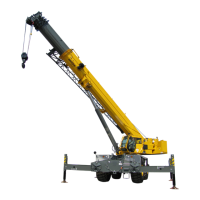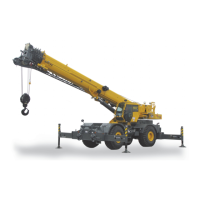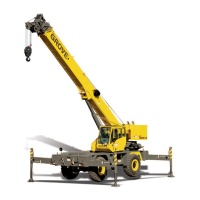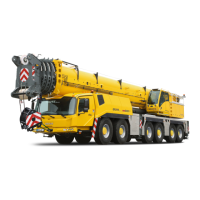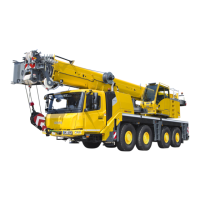Grove Published 3-1-2018, Control # 559-03 3-27
RT9130E-2 OPERATOR MANUAL OPERATING CONTROLS AND PROCEDURES
OPERATING PROCEDURES
Pre-Starting Checks
A complete walk-around visual inspection of the crane
should always be made with special attention to structural
damage, loose equipment, leaks, or other conditions that
would require immediate correction for safety of operation.
The following checklist items are suggested specifically for
the operator’s benefit to make certain the crane is prepared
for starting the day’s work.
Fuel Supply
Check the fuel level and make sure the cap is on tight. Drain
any water from the fuel filter.
Engine Oil
Check the oil level in the crankcase and fill to the FULL mark
on the dipstick. Do not overfill.
Engine Coolant
Check the coolant level in the radiator and fill to the proper
level. Do not overfill and check to make sure the cap is
secure.
Batteries
Check that the battery cables and clamps are tight and not
corroded.
Signal and Running Lights
Check all signal and running lights for proper operation.
Replace burned out lamps with those of the same number or
equivalent.
Foot and Parking Brakes
Check the foot and parking brakes for proper operation.
Daily Lubrication
Make certain that all components requiring daily lubrication
have been serviced. (Refer to Maintenance and Lubrication,
Section 5.)
Hydraulic Reservoir and Filter
Check hydraulic fluid quantity level and filter condition
indicator. Check breather for cleanliness and ensure it is
secure.
Tires
Check for severe cuts, foreign objects embedded in treads,
and for correct inflation pressures. A tire inflation chart,
providing the correct air pressures, is located in the Load
Chart Book in the crane cab.
Wire Rope
Inspect wire rope in accordance with applicable Federal
Regulations.
Inspect sheaves, guards, guides, drums, flanges, and any
other surfaces that may come in contact with the rope for any
condition that could cause possible damage to the rope.
Hook Block
Visually inspect for nicks, gouges, cracks, and evidence of
any other damage. Replace any hook that contains cracks or
shows evidence of excessive deformation of the hook
opening, including twist. Be sure the safety latch is free and
aligned.
Air Cleaner
Check the filter restriction indicator (Tier 3 models only).
Check filter and tubing for security.
Air Intake Restriction Monitoring (AIRM)
Communications System - Tier 4 Only
The Tier 4 engine includes the Cummins AIRM
Communications System. This calculates real-time air filter
restriction at operational flow rate using the temperature and
pressure input from the TBAP sensor, which is included on
the Direct Flow air cleaner.
A maintenance fault (Fault Code (FC) 5576) is initiated at the
dirty filter restriction level, generating a blinking “Check
Engine” light for 30 seconds at every key on until the intake
air restriction drops below the dirty filter restriction threshold.
A severe warning fault (FC 3341) is initiated if the
maintenance fault condition degrades to a severe restriction
level for a given time period, generating a solid amber
“Check Engine” light and initiating a progressive engine
derate in order to protect the engine from damage until the
intake restriction drops below the dirty filter restriction
threshold.
Cold Weather Operation
The following recommendations are for operating Grove
cranes in regions with ambient temperatures below -9°C
(15°F) which are considered arctic.
NOTE: Additional information regarding cold weather
operation is available through your Cummins
dealer/service center under Service Bulletin
3379009.
CAUTION
Avoid Crane Damage!
Do not engage the parking brake while the vehicle is
moving. Damage to the crane can occur.
Disengage the parking brake before driving. Damage to
the crane can occur.
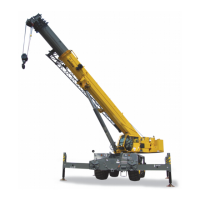
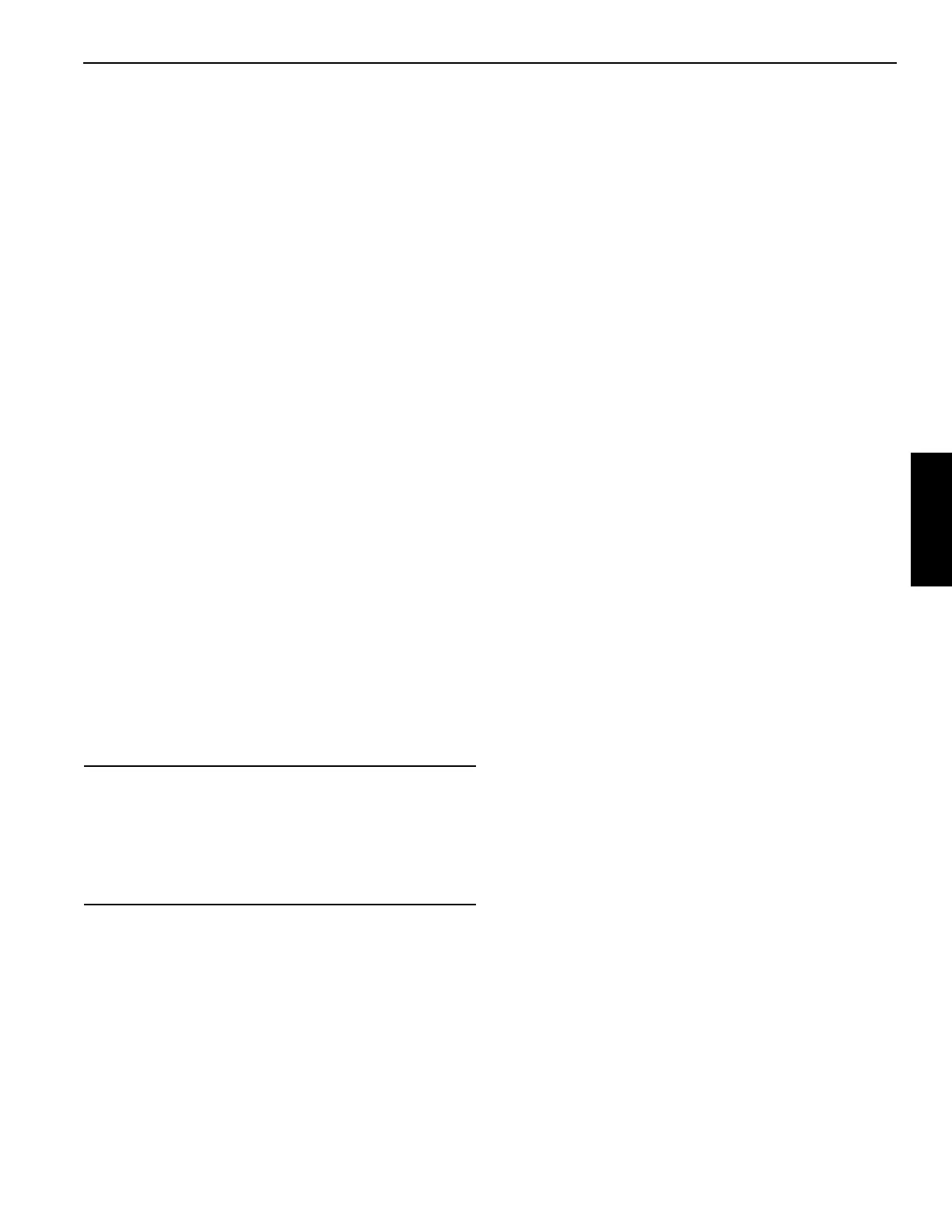